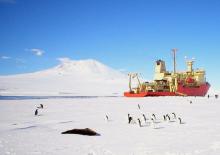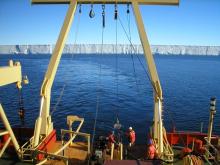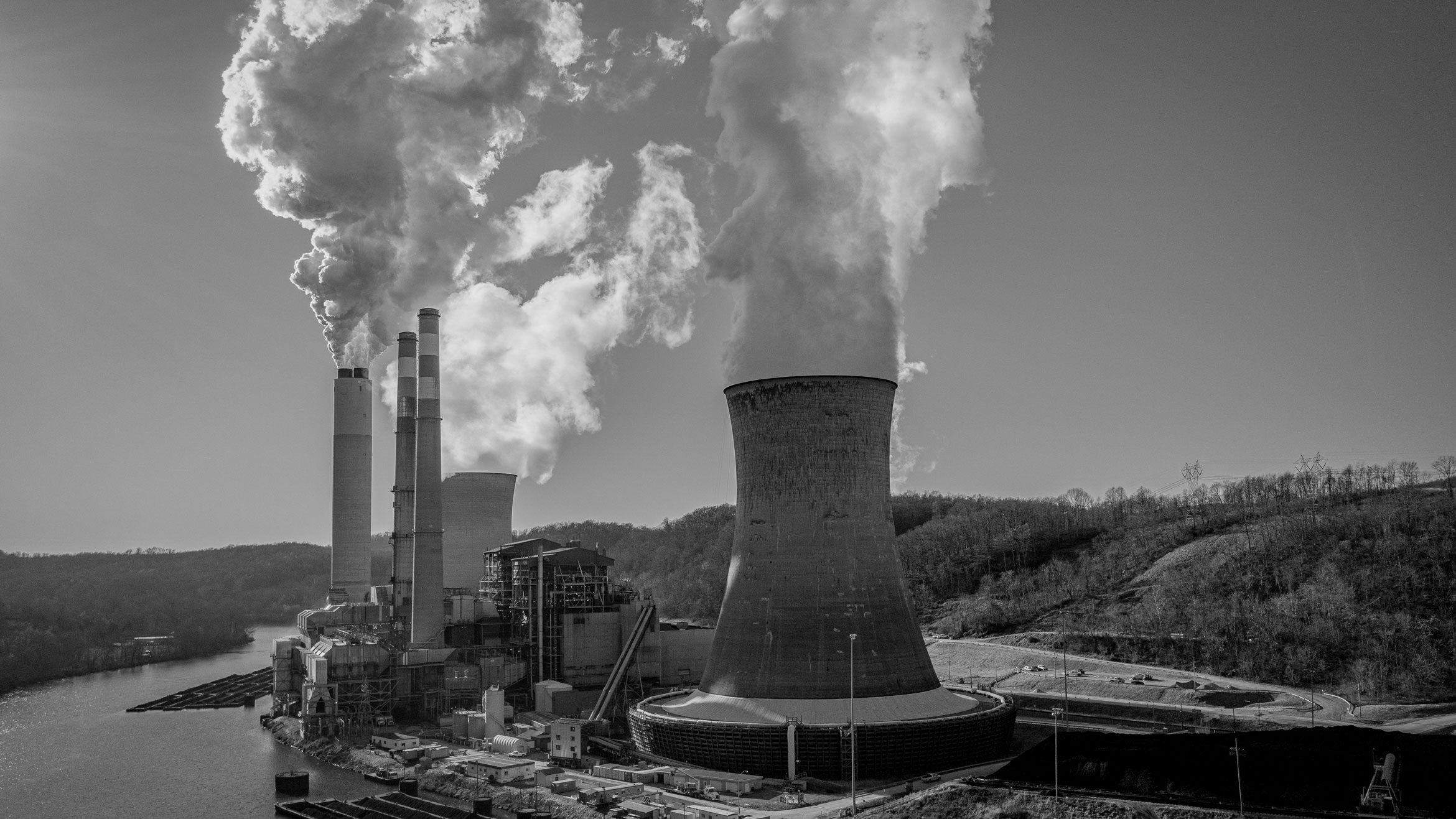

Using echo-sounding equipment to create images and maps of areas below the ocean floor, researchers have begun to unravel a new story about the Antarctic Ice Sheet.
Images of areas below the Eastern Ross Sea, next to West Antarctica, provide evidence that the subcontinent was involved in the general growth of the Antarctic Ice Sheet as it formed many millions of years ago, according to scientists at the University of California, Santa Barbara. The National Science Foundation provided funding for the project.
Changes in Antarctica, an area that contains approximately 90 percent of the world's ice, are particularly important for understanding some implications of global warming. For example, melting of ice sheets –– due to warming of the atmosphere and oceans –– has emerged as a key factor in the modeling of climate scenarios. And as ice melts, habitat for penguins and other marine animals also decreases.
Most studies of the "greenhouse to icehouse transition" –– a time of climatic change that occurred about 35 million years ago –– deal only with ice sheet growth on East Antarctica, according to the scientists. They do not recognize the ice sheet on West Antarctica. The current time is referred to as "icehouse" because it is a comparatively cool period in the Earth's history.
"We know that West Antarctica is the most sensitive of the ice sheets and most likely to respond adversely to global warming," commented Bruce Luyendyk, professor of marine geophysics and Earth science at UC Santa Barbara, and co-author of a paper describing the study in the May issue of the journal Geology.
Much of the bedrock of West Antarctica is underwater, making the ice sheets that cover it particularly vulnerable to slipping into the ocean as it warms, which will cause sea levels to rise. West Antarctica, a very large subcontinent with a peninsula that reaches toward Southern Chile, has about 2.5 million cubic kilometers of ice sitting on it.
The scientific team believes that West Antarctica was previously higher in elevation, and that large glaciers extended offshore into the Ross Sea from the Marie Byrd Land sector of West Antarctica prior to 25 million years ago.
The scientists used seismic reflection imaging, a type of echo-sounding that shows structures hundreds of meters beneath the ocean floor. The images depict geological structures underneath the Eastern Ross Sea.
"These seismic reflection profiles image U-shaped, erosional troughs that are interpreted as having been carved by glaciers, and flat-topped ridges, that are interpreted as giant moraines," said first author Christopher C. Sorlien, a research scientist at UCSB. Moraines are large mounds of sediment that have been deposited by moving glaciers.
These features mapped below the sea floor look like formations carved and deposited by glaciers elsewhere. "We can see that ice was carving up the continental shelf soon after the greenhouse to icehouse transition," said Luyendyk. "These look like geological features that were formed by moving ice."
This evidence for West Antarctica participating in the general growth of the Antarctic Ice Sheet has not been demonstrated before now in areas adjacent to the continent, he explained. "The significance of the findings is that much more of the continent was hosting an ice sheet at the start of ‘icehouse' Earth, than previously suspected."
In addition to Sorlien and Luyendyk, other co-authors from UCSB are Douglas S. Wilson, an associate research geophysicist in the Department of Earth Science, and Robert C. Decesari, who was a research assistant in the same department and is now a senior petroleum geologist with Exxon Mobil. Louis R. Bartek, associate professor in the Department of Geological Sciences at the University of North Carolina, Chapel Hill, and John B. Diebold, a senior scientist at Columbia University's Lamont-Doherty Earth Observatory, are also co-authors.
†The researchers used the National Science Foundation Research Icebreaker Nathaniel B. Palmer to conduct their experiments in the Eastern Ross Sea. In the top photo, the ship rests in sea ice in McMurdo Sound, Antarctica, at the foot of Mount Erebus, a 13,000 foot-high active volcano. The penguins in the foreground are the region's natural inhabitants. In the lower photo, researchers aboard the ship prepare their equipment for data-collection work beneath the ocean floor.
Photos by Bruce Luyendyk



